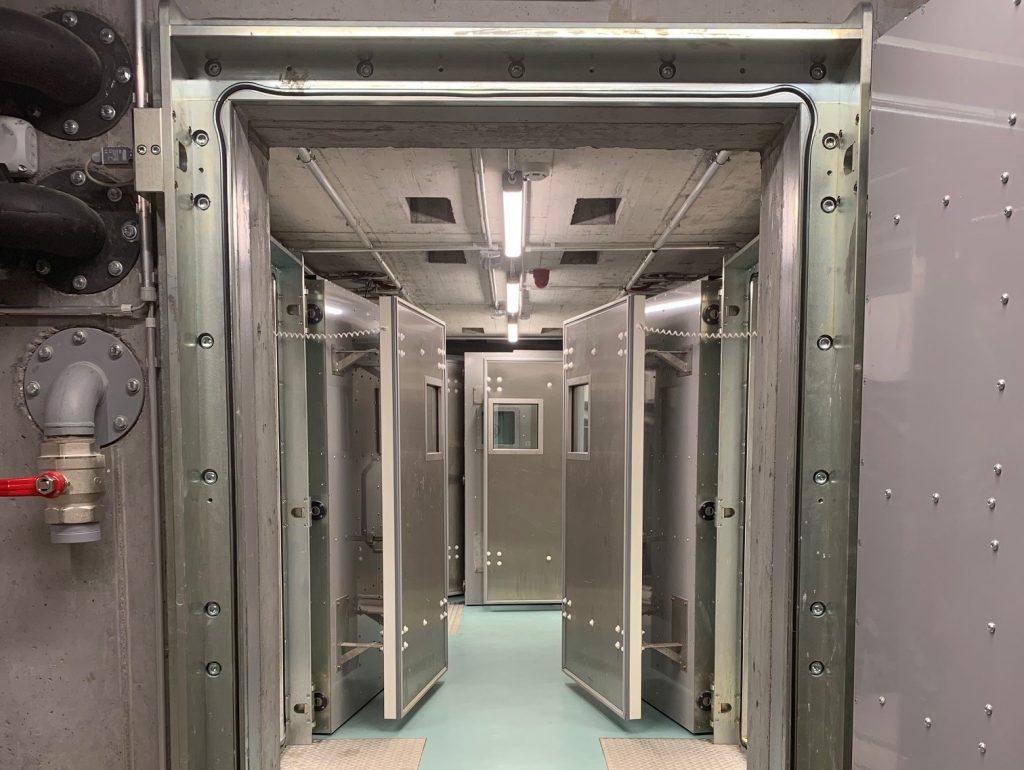There is a place where the Earth’s most extreme climatic conditions can be simulated for research purposes, to study climate’s influence on humans, ecological processes and technologies.
terraXcube is an incredible research infrastructure built in Bozen, Italy in 2018 by the Eurac Research Institute, where, inside climatic chambers, scientists can control environmental conditions such as altitude, humidity, and temperature. They can make it snow, or rain, and explore the adaptability of the human body, plants and entire ecosystems to different climate conditions.
Among the various studies that are being carried out thanks to this facility, whose applications span from medical sciences to the testing of industrial product performances, psychologists are investigating the impacts of temperature and climate on human behaviour.
“Humans are not aware of their great ability to perceive external temperature change. This explains why, when we read in the newspapers that the average global temperature has increased by over one degree Celsius, no one cares. Instead, I am finding that we should care, because we can feel even a one degree temperature change” says psychologist Laura Battistel, PhD student at CIMeC (Center for Mind/Brain Sciences, University of Trento) and terraXcube (EURAC Research). Battistel is studying temperature sensitivity inside the EURAC climatic chambers, and her research results will add relevant information to the crucial efforts of improving thermal comfort inside buildings in a changing climate. “I want to make people aware of the importance of studying how we perceive the environment, because we cannot talk about problems involving humans without understanding how humans work.”

What do you mean by ‘temperature sensitivity’ and how did you reach the understanding that humans can perceive even a temperature change of 1°C?
Our thermal perception process involves at the same time an objective dimension and a more subjective one, which includes our preferences and habits. The first is our ‘temperature sensitivity’, or the ability to detect changes in the temperature, either in terms of increasing or decreasing. The latter makes our ‘thermal comfort’”.
In scientific literature, there are many studies about temperature sensitivity where thermal stimuli are directly applied to people’s bodies, usually through thermal sensors applied to specific parts of the body, such as fingers or the palms of the hands. But there is no scientific publication about what happens when the overall body is involved through changes in air temperature.
To assess this aspect of temperature sensitivity, we conducted a series of experiments in EURAC four small climatic chambers that are interconnected. In the first experiment, which started in autumn 2022, we set for each chamber a different temperature between 23 and 25°C and controlled every other variable, such as humidity, light exposure, and clothes of the participants.
We asked 26 participants to move over between the chambers for two hours and to make comparisons between the temperature they could perceive in different chambers. They stayed in each chamber for just 5 seconds to perceive the temperature before moving, and each time they were asked to tell whether the second chamber was warmer or colder than the previous one.
We found a very clear result: temperature change is an immediate perception, and our sensitivity threshold is +/- 1°C. The variability between participants was very small, despite they were different in many psychological dimensions and they described themselves as more sensitive to the cold or to the warm, or as aware of their body or not.
The minimum difference they were always able to perceive in temperature was one degree. Under one degree, they could still perceive the difference, but they were not always so sure about their answer.
To what extent are we aware of this ability to perceive temperature change?
I found it very interesting that participants were not aware of this ability. After the experiment, I always asked them if they were sure about their answers and what they thought was the difference in temperature between the chambers.
The average answer to this latest question was “five degrees”. They were so sure of their perception that they thought the temperature difference was very big. And all of them were surprised when I informed them that the difference was just one degree.
This means that we are not aware of this ability, which we can say is intrinsic in our body, because it is the same for all of us. Also, this tells us a lot about climate change awareness: since we are not aware of our sensitivity to external temperature, it is easy to understand why we do not care so much when we read about scientific data describing rising temperatures. We are not aware that one degree is important to us, we are not aware that we can feel this difference. Instead, we clearly feel it!
This is @laurabattistel, a #psychologist who is investigating the impacts of temperature and climate on behaviour. By utilizing the @terraXcube, our extreme climate simulator, she found that we can accurately perceive even slight changes in #temperature. pic.twitter.com/EM1d8SXVRh
— Eurac Research (@EURAC) May 25, 2023
Can the knowledge emerging from your studies have concrete applications towards moderating heat stress?
In a second experiment, whose results are still preliminary, I am shifting the perspective to go beyond the understanding of how we perceive the environment: I want to understand how the environment affects our perception.
We live in a multisensorial reality and all our senses are always involved when we experience our environment. There is a strong effect described in the literature, the ‘hue-heat effect’: it tells us that we automatically associate cool colours with cold temperatures and warm colours with hot temperatures. If you see red, then you think “hot”, if you see blue, you think “cold”.
We decided to test how strong this effect is by changing the colour of the lights inside the chambers. We performed the same experiment as before, but this time the lights in the chambers were blue or red, and in two possible combinations. In a condition, we respected the “hue-heat effect”, with the warmest between the two chambers having red lights and the coldest having blue lights. Instead, in the incongruous condition the relationship was reversed – meaning that the warmest chamber was blue and the coldest was red. Moreover, we mixed these conditions continuously to assess how unconscious this effect can be.
 |
 |
For now, we found a small but significant effect: when the lights are congruent, the performance is better than when the lights are incongruous. Since we merge our senses during our perception, in the congruent condition participants have two senses – feel and sight – that are telling them the same story, so they are more confident in their answers. While in the incongruous condition, information from different senses tell different stories, and participants are more confused about their answers.
These very preliminary results tell us that the colour of the lights can affect our thermal judgment. We will further investigate the potentiality of these results to understand how we can apply them in normal life situations. For example, we would like to understand to what extent light can help us feel more comfortable in uncomfortable temperatures. Imagine switching the lights of houses and offices to a cold white in summer, if this could help you to feel fresher. Maybe you could avoid turning on the air conditioning, or you will have to turn it on, but instead of setting it to – for example – 25°C, you will feel comfortable at 27°C.
What are the next steps of your research?
We have many ideas. We will work towards making the experience of our participants even more immersive through virtual reality. Moreover, we will investigate temperature sensitivity outside the comfort temperature of 23-25°C, to understand if we can be so accurate in detecting temperature differences when exposed to uncomfortable temperatures.
We would also like to study the influence of other senses by adding auditory and olfactory stimuli: some research shows that if you hear the sound of water, or smell the scent of mint, you are prompted to feel cooler. Imagine offices in summer with water falling sound in the background, a scent of mint, and cold lights!
Finally, I am interested in the social dimension of temperatures: how external temperature can change the way we behave towards others? Is temperature a factor that influences, for example, the interpersonal space, namely the space we put between ourselves and others? A full understanding of temperature sensitivity that we are now investigating is also crucial to reply to these questions.

Laura Battistel completed her Psychology degree with a Neuroscience specialization in 2021 and she is now in her 2nd year of PhD in Cognitive and Brain Sciences. Her research focuses on the impact of environmental temperature on our behaviour and perception of the surroundings, exploring the intricate connection between the mind, body, and environment.






